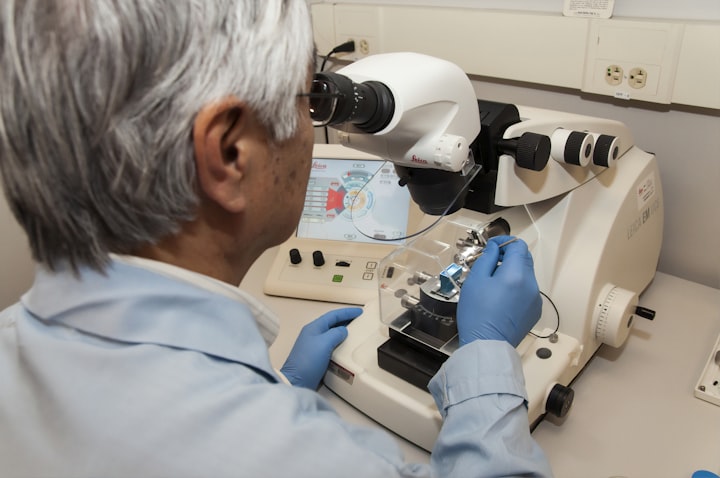
Concerns about the unethical and unsafe use of genetic engineering arose with the advent of genetic engineering and DNA technology combined in the 1970s due to a lack of understanding and knowledge of these technologies. A well-known example is the early use of combined DNA technology to produce genetically modified organisms. In the 1980s, there was a debate as to whether the new mutants created by genetic DNA research could be considered patented, but the US Department of Agriculture approved the sale of the first genetically modified organism, a virus used as a synthetic vaccine, from a single gene in -1986.
Genetic engineering usually refers to techniques used to modify living genes, to produce a desirable substance (such as an enzyme or metabolite) that can produce the first living thing, or to improve existing cellular processes. In the breeding of traditional animals and plants, several hybrids were developed to select a living organism with the desired phenotype while genetic engineering takes genes from one living organism and transmits them to another.
Genetics and genetic engineering are two related technologies in which the genes of living things are changed. Genetic engineering does not include the traditional methods of reproduction, fertilization, importation, polyploidy, mutagenesis, or cell fusion that does not use recombinant nucleic acid to mutate organisms in this process. On the other hand, genetic engineering allows the direct transfer of a single object or type of interest to obtain the desired agronomic element.
Genetic engineering (also known as genetic modification or genetic modification) is a direct genetic deception of living organisms through biotechnology. The genome of an organism is its genome, in plants and animals that contain DNA. We use the term genetic therapy in rehabilitation efforts, as well as genetic engineering to enhance genetic engineer's efforts to improve human and general skills.
Genetic engineering is a wide range of technologies that can be used to modify the genetic makeup of cells, including the transfer of genes to the boundaries of species to produce improved or new living organisms. Genetic engineering, based on a technology known as CRISPR / Cas9, enables researchers to adapt to the genetic makeup of living things by means of mutations directed at their DNA. It has a wide range of applications and is used to modify the genes of plants, plants, farm animals, and model laboratory organisms such as mice.
Over the past 50 years, genetic engineering has improved the understanding of deoxyribonucleic acid (DNA), a double helix chemical that codifies genetic makeup. CRISPR genetic engineering, developed over the past few years, uses the same natural method used by viruses to insert one piece of genetic information into another. It proved to be the cheapest, easiest, and fastest way to process organic DNA in a laboratory.
Bacteria were among the first organisms to convert plasmids (DNA implants) to contain new genes that contain the code of drugs or enzymes that process food or other substrates. Direct genetic manipulation (genome or synthetic methods) to modify genetic traits in cells or organisms involves the transfer of certain traits or genes from one animal to another, including various species. Once the genetic package is ready it is introduced into the plant cell and processed through a process known as mutation. A common method of introducing a gene package to plant cells involves biolistic mutations (using genes) and agrobacteria-mediated mutations.
This process of genetic engineering can alter the number of cells and the ability to differentiate cells from reunited cells is an important aspect of genetic engineering. Going back is the last step in the genetic engineering process where transgenic plants are mixed with a variety of important agronomic elements and are selected to obtain high-quality plants that produce the gene used in the desired way. This will also clarify the causal interpretations in the relevant environmental safety laws used to create the presence or absence of compound DNA, clarify a combination of Argentine genetic novels and genetic engineering techniques used in Brazil, and introduce a clear way to differentiate between genetic variants. types of genome programming applications - eg SDN-1 applications (using nucleic acid sequences provided as configuration templates) and S-trans (SDN-2, SDN-3) and ODM applications (using such templates direct genetic modification).
Genetically modified bacteria and other viruses have been used to produce human insulin, human growth hormones, saturated proteins, and other drugs. The number of such combinations is likely to increase in the future. The release of genetically modified organisms from the environment could increase human suffering. Therapeutic interventions linked to animal welfare and experiments with genetically engineered DNA sequences could lead to a natural disaster.
Seven out of ten Americans (70%) believe that genetically modified mosquitoes are a good use of technology to prevent the spread of mosquito-borne diseases, but about 3 out of 10 (29%) think that they are genetic. engineering for this purpose is very advanced. For example, genetic engineering “raises the question of whether it is appropriate to examine the human genome so that humans can surpass Olympic athletes, or be smarter than Einstein.
There are many benefits and advantages to the development and application of biotechnology, including the desirable contributions that genetic engineers must make to medicine, pharmacy, agriculture, the food industry, and the conservation of our environment. Concerns about genetically modified genes (GMOs) that are resistant to herbicides and pests ranged from their safety to genetically modified plant pollen, to environmental impacts due to increased use of pesticides and reduced performance.
About the Creator
Finn Henry
keep up with WWE





Comments
There are no comments for this story
Be the first to respond and start the conversation.